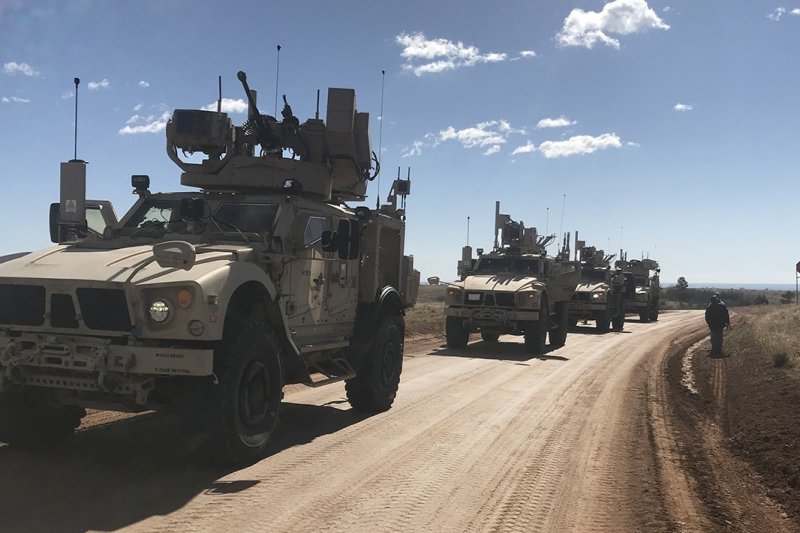1 of 2 | Soldiers from the 4th Infantry Division took part in the first home-station training for the Counter-Small Unmanned Aircraft Systems from April 19-May 7, ahead of a deployment. Photo Courtesy of U.S. Army
June 17 (UPI) -- The 4th Infantry Division participated in the Army's first unmanned aircraft system threat training ahead of deployment to the U.S. Central Command region, the branch announced.
The home-station training session took place at Fort Carson, Colorado from April 19 to May 7, the Army said this week.
The training included simulations of the Mobile-Low, Slow, Small Unmanned Aerial Vehicle Integrated Defeat System. M-LIDS is a system of sensors and shooters mounted on a Mine-Resistant Ambush Protected vehicle.
The Army plans to deploy teams of five from the training session to CENTCOM in order to train other deployed units.
The trainees learned power-up procedures and connecting different systems and components. The training included hands-on interactions with C-sUAS systems and live-fire sessions.
Chief Warrant Officer 2 Randy Jones, the systems integrator for the 1st Stryker Brigade Combat Team, said the training arms soldiers to defend themselves against UAS threats, which are capable of collecting intelligence and performing low-cost reconnaissance. Such UAS threats include drones.
"There are lots of enemy UAS threats that are out there on a pretty regular basis and that's likely what we're going to be faced with," Jones said.
The mobile training teams will cover topics ranging from basic threat identification and tracking to joint service primary UAS operations.
"Many of these Soldiers in the class are your typical infantry Soldiers who don't deal with a complex system of systems like this on a regular basis as well as enemy UAS threats," Jones said.
"They're focused on a lot more of your standard infantry tasks. This is a really eye-opening experience for a lot of them to understand the threat that's out there, and understand this system, how we can use [it] to counter these threats," Jones said.















